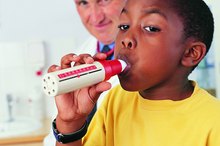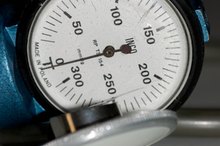How Do I Calculate Tidal Volume With Ideal Body Weight?
Tidal volume is the amount of air that passes in and out of the lungs during normal breathing. It can be measured physiologically with expensive pulmonary medical equipment in a laboratory. Most people do not have access to this equipment but can estimate the tidal volume by using the patient's body dimensions.
Calculate the ideal body weight using the Devine Formula 1. For males, the formula is 50 plus 2.3, times the product of height in inches minus 60. For females, it is 45.5 plus 2.3, times the product of height in inches minus 60. Various other formulas are available, however the Devine formula is the one consistently used in pulmonary research and applications.
Breathing Exercise Machines
Learn More
Calculate the tidal volume by multiplying 12 ml by the ideal body weight in kg 1. Keep in mind that this is not a physiologic determination of tidal volume--only an estimation. This formula is for someone who is resting comfortably and in excellent health. For patients with asthma or emphysema, multiply 10 ml by the ideal body weight 1. Critically ill patients in the intensive care unit have even a lower tidal volume of 8 ml/kg.
Add 30 percent to tidal volume for pregnant or lactating women. During and after pregnancy, women need more air in their lungs due to higher oxygen requirements. The oxygen is passed on to the infant and used to increase milk production.
How to Calculate the Results From a Spirometer Lab
Learn More
Reduce the tidal volume by half for children. Children have lower oxygen requirements and thus do not require as much air to pass in and out of their lungs.
Related Articles
References
Writer Bio
Scott Gordon began writing at Brown University in 1991 for "Asian Voices" before moving to the University of Miami for medical school. He continues to write peer reviews, expert opinions and items for the Physicians Council for Responsible Reform Committee. Dr. Gordon received special training in internal medicine at the University of California Los Angeles-Wadsworth and has a private practice in Los Angeles, California.








